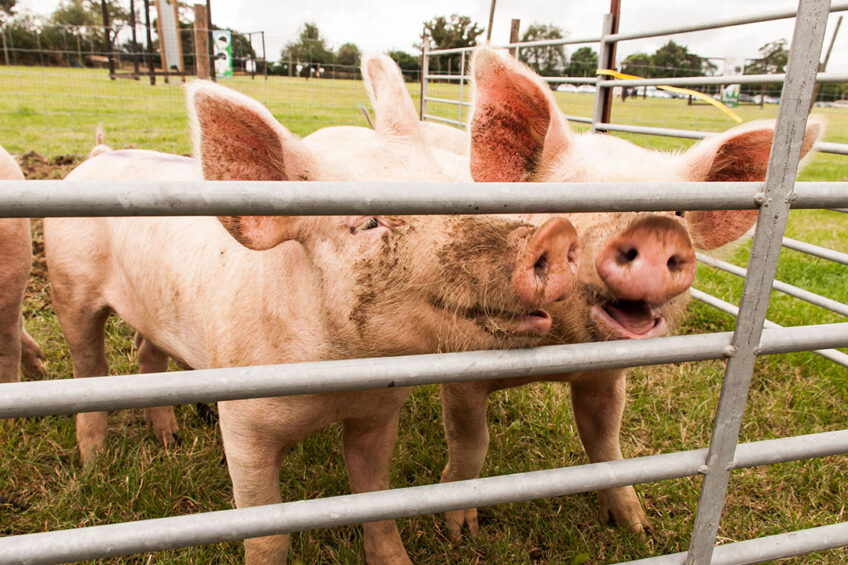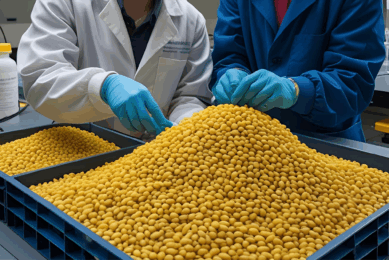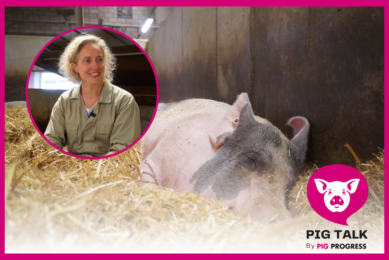Alternative by-products to replace soybean in pig nutrition

There is an increase in global demand for sustainable protein sources. This article will discuss alternative by-products to replace soybean in pigs’ diets and their effects on growth performance and carcass and meat quality traits.
Factors including physical and chemical characteristics of alternative sources, the level of essential amino acids, the presence of anti-nutritional factors, and the conversion method into final products are essential to evaluate the potential replacements of soybean.
Alternative by-products used in pigs’ diets include:
- oilseed by-products,
- local plants by-products,
- by-products from industrial processes, and
- processed animal protein by-products.
Oilseed by-products
Oilseed by-products (including meals, cakes, and expellers) are derived from oil-bearing plant species. Defatted by-products from linseed and sesame comprises high volumes of crude protein. Rapeseed meal obtained from the press cake remained after oil extraction contains 35% protein and high fibre content, sulphur-containing amino acids, and phosphorus. However, rapeseed meal consists of anti-nutritional factors such as glucosinolates, tannins, and phenols which limit its application in the swine diet to up to 15%. Although, the canola meal derived from a variety of rapeseed contains low content of erucic acid and glucosinolates making it a potential candidate for soybean replacement.
Local plants by-products
Minor local plants such as guar can be used as soybean substitutes. Guar meal is a by-product of guar gum production containing highly viscous non-starch polysaccharides such as galactomannan polysaccharide which enhances digesta viscosity, prevents gut enzymatic activities, and decreases nutrient digestibility.
By-products from industrial processes
Distillers’ dried grains with soluble are the main by-products from the ethanol industry produced by dry mill ethanol plants. Distillers’ dried grains with soluble are a proper source of protein (25-30% dry matter), fat, fibre, and energy for swine diet. In addition, they are significantly used in swine diets because of the encouraged use of renewable energy sources for production of biofuels. Furthermore, distillers’ dried grains with soluble have well-digested protein characteristics, low content of anti-nutritional substances, and high nutritional values. However, they are rich in unsaturated fatty acids which can negatively affect dietary intake and the oxidative stability of the by-product. Rice distillers’ by-product is another good source of crude protein; however, the high fibre content limits its use in pig diets.
Processed animal protein by-products
The main processed animal proteins used in swine diets include:
- meat and bonemeal,
- blood products,
- inedible meat,
- waste animal tissue and fat,
- feather meal,
- poultry by-product meals, and
- fishmeal by-products.
Furthermore, liquid whey residues from the cheese industry can be used as dried ingredients. Fish silage has high protein content (39.01%), high protein digestibility (93.58%), and high biological value. However, due to high moisture content, high price and limited availability, its application in swine diets has been decreased.
Effects on growth performance and carcass traits
- Rapeseed meal inclusion to pig diets – decreases feed intake due to the presence of glucosinolate which reduces the diet tastiness. Different inclusion levels of rapeseed meal in the growing and finishing periods have no significant effects on average daily gain and feed conversion ratio, demonstrating the flexibility of using this protein source alone or together with other sources. Furthermore, rapeseed meal can be added to other legumes to replace soybean; however, it is required to add synthetic amino acids to the mixture to balance the nutritional quality. Although there are contrasting results regarding the impact of rapeseed meal on growth performance due to differences in the glucosinolate concentrations in each variety of rapeseed. In addition, rapeseed meal contains high amounts of anti-nutritional factors in the variety used. On the other hand, rapeseed meal inclusion has no impact on carcass traits including dressing percentage, backfat thickness, lean content, weight, carcass yield, and composition of cuts.
- Guar meal inclusion in the pig diets – decreases average daily feed intake, average daily gain, and feed conversion ratio.
- Defatted rice bran – has negative effects on performance with an increase in feed intake and decrease in average daily gain and feed conversion ratio; however, it has no impacts on the quality of the carcass.
- Supplementing fishmeal – decreases daily feed intake, daily weight gain, and feed conversion ratio. In addition, fishmeal inclusion reduces back fat thickness, loin depth, and fat depth.
Effects on meat quality traits
- Total replacement of soybean with rapeseed meal – affects chemical composition of different pork cuts, reducing the fat content of shoulder and steak, while increasing the fat content of ham and belly. However, total soybean replacement with rapeseed had no effect on pork stability during storage.
- Corn distiller’s dried grain with soluble – has high content of unsaturated fatty acids which negatively impacts meat quality and decreases the protein content.
- Fava bean as partial replacement for soybean – increases meat tenderness, juiciness, and palatability; however, the flavour is not affected.
- The inclusion of yellow lupin – in the diet causes lower odour, taste, and juiciness scores.
- Corn distiller’s dried grain – enhances the tenderness and juiciness of meat and fish meal silage decreases the hardness and overall acceptability of meat.
Concluding remarks
Traditionally, soybean is the main source of protein in pig diet formulation; however, in recent years the application of soybean is limited due to rising prices, ethical issues, environmental impact, and competition for land use. Various by-products including oilseed by-products, local plants by-products, by-products from industrial processes, and processed animal protein by-products are among potential soybean substitutes. However, further research is required to assess their cost-effectiveness and effects on meat properties.
Review:
Soybean Replacement by Alternative Protein Sources in Pig Nutrition and Its Effect on Meat Quality – published on PubMed











